#en lo profundo
Today’s the day!

It’s here! It’s happening! Our new exhibition, “Into the Deep: Exploring Our Undiscovered Ocean” opens today! What are you most excited to deep-sea?!
: Paper lantern jelly, Pandea rubra—on display now!
Don’t let the adorable flippy flappies fool you! With sea angels, the devil is in the details.
Sea angels are open-ocean wing-footed sea snails known as “pteropods.” This genus (Clione spp.) is less than an inch (1-2cm) long, and can be found all around the world in cold and temperate waters from the surface to more than 2,000ft (600m) deep.

Angelic as they may appear, they’re prowling predators in the plankton, pursuing petite pteropods before pouncing with hidden buccal cones that separate ocean escargot from their protective shells, transforming them into pelagic purée.

Sea angels are some of the many mighty and mysterious midwater marvels that will appear in our new “Into the Deep: Exploring Our Undiscovered Ocean” exhibition—WHICH OPENS TOMORROW APRIL 9, 2022! We can’t wait to deep-sea you soon!



People always ask us: Monterey Bay Aquarium, what are YOUR favorite deep-sea animals?! After decades of waffling, we’re ready to say that *these* ten incredible creatures of the deep are our favorites—for this particular video!
From the beautiful to the bizarre, the deep sea is filled with some of earth’s most amazing and awe-inspiring creatures. To celebrate the opening of our new exhibition, “Into the Deep: Exploring Our Undiscovered Ocean"—the largest exhibition of deep-sea life in North America—we asked Aquarists Alicia, Ellen, MacKenzie, Mary, Dalton, and Tommy to share about some of their favorite critter-colleagues.
You can deep-sea them for yourself this Saturday, April 9!!
Mythological Sealebrities Give Wave Reviews Of Monterey Bay Aquarium’s New “Into the Deep” Exhibition

Several blurry mythological creatures tour the Monterey Bay Aquarium’s New “Into the Deep” exhibition. Photo: Nessie/Associated Pisces
MONTEREY, CA – The Monterey Bay Aquarium’s latest exhibition “Into the Deep/En Lo Profundo” opens April 9, and it’s already making waves through the mythological aquatic community worldwide.
“I can barely believe what I saw in there—and I’m me!” exclaimed legendary Norse cephalopod the Kraken in today’s exclusive preview.
They were among several VIP entities invited to tour the Aquarium’s new deep-sea gallery.
“I’m so amped up I gotta go sink a brigantine ship or something!!” added the gargantuan squid.
Snake-haired Gorgon Medusa seemed equally pleased to see the exhibition after a long odyssey from the Greek Isles: “Oh yeah, the whole exhibit rocks—well, maybe more so since I went through, but still!”
“I dropped everything—helicopters, high-tension wires, skyscrapers, you name it—to come and see this,” stated Japanese kaiju and international movie star Godzilla, who had nothing but praise for the Aquarium’s mix of never-before-seen video footage, ethereal soundscapes, innovative interactive displays, and world-firsts for animal husbandry. “Honestly if you’re still stomping around a metropolis right now, you’re missing out!”
“Couldn’t agree more!” chimed in mythical ghost-whale Bake-Kujira. “I don’t want to spoil anything, but there are bones! BONES!! I usually say ‘Boo!’ to most things, but not today!”
“Into the Deep/En Lo Profundo” is the culmination of many years of collaboration between the Aquarium and its science partner MBARI, the Monterey Bay Aquarium Research Institute, a leading oceanographic organization whose ships and robots explore the briny depths of “inner space” that many of the visiting cryptids call home.
“Utterly impressive,” offered the colossal Arabian fish Bahamut, the foundation of Earth’s support structure. “I know a little something about heavy lifts, and this effort is massive in scale.”
“It’s exactly what I’ve been waiting for,” shared the Dark Lord Cthulhu, who made a special trip from R’lyeh to explore the new gallery showcasing animals from the midwater to the seafloor, all adapted to survive the extreme conditions found in the deep sea, “Honestly, it’s what fhtagns are made of.”
“This kind of exhibition is a white whale if there ever was one,” chimed fabled American sperm whale and open-ended metaphor Moby Dick, “Call me impressed!”
“Most of my pictures turned out blurry, but I still had a blast,” mused the elusive creature/unidentified floating Scottish object Nessie, “Even if I tried to describe how cool it is, I just don’t think you’d believe me.”
When it opens, “Into the Deep/En Lo Profundo” will be the largest display of deep-sea life in North America. It’s expected to run for many years, with a rotating cast of midwater drifters and seafloor staples, like giant isopods, to bring guests face-to-carapace with life from the planet’s largest habitat that’s rare-to-see but not rare-to-the-sea.
“I’m just so proud of all my hidden babies getting their time to shine like this,” stated a clearly emotional Yacumama, Peruvian goddess-serpent and mother of all aquatic beings. “This space is so full of wonder, it just draws you right in.”
“Communing with the abyss brings a deep serenity I hope that everyone can enjoy,” offered Mami Wata, venerated West, Central, and Southern African water deity and occasional mermaid. “Seeing such otherworldly creatures and understanding the challenges they face—not only to survive, but to deal with human impacts going forward—it helps hold a mirror up to our reality so that people can see themselves as part of a larger, more profound web of life on this water world.”
“Whoa, that’s deep,” chimed in Bobo, Monterey Bay’s own cryptozoological ambassador. “We’re really not fooling around on this one, even with it being April 1 and all.”
Bobo concludes proudly, “It’s just so killer. Whale deep-sea you all very soon!”
Very beautiful, very powerful
Oh you know we’re suckers for lumpfish!! Lumpfish may look otherworldly, in part because they love to cling on: Modified pelvic fins form a round suction cup that helps lumpfish stick around and save energy. In fact, their family name “Cyclopteridae” comes from Greek words for “circle” and “fin”!

Lumpfish are so-named for their ridged, bumpy texture created by fleshy knobs known as tubercles.

Denizens of the deep in adulthood, lumpfish migrate to shallower waters to breed, leaving little clumps of lumps to develop in warmer temperatures before returning to more frigid depths.

Find out more about lumpfish and check them out for yourself in our latest exhibition “Into the Deep: Exploring Our Undiscovered Ocean”!

Not even its spines can pop the adorabubble that is the Japanese porcupine crab Paralomis histrix!
These gloriously globose and highkey pokey deep-sea king crabs are part of the seafloor’s cleanup crew, searching for scraps and small bites in the muck.
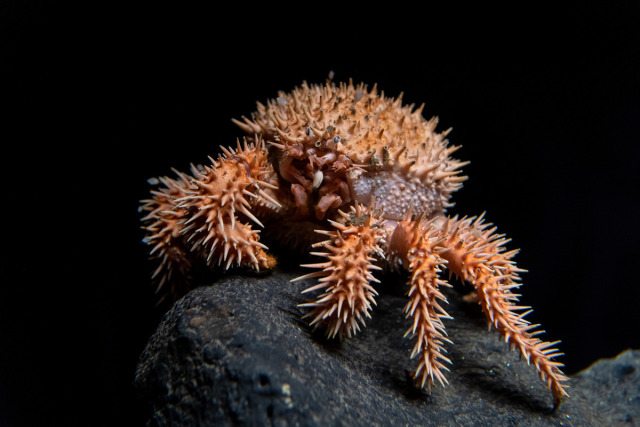
Porcupine crabs and their king crab kin are related to hermit crabs and lack one pair of walking legs compared to “true crabs”, while their bodily asymmetry tells of a different ancestral tale than other carcinized crustaceans.

You can check them out in our new “Into the Deep: Exploring Our Undiscovered Ocean” exhibition!
Range: western Pacific Ocean
Depth: 650 to 6,600 feet (200 to 2,000 m)
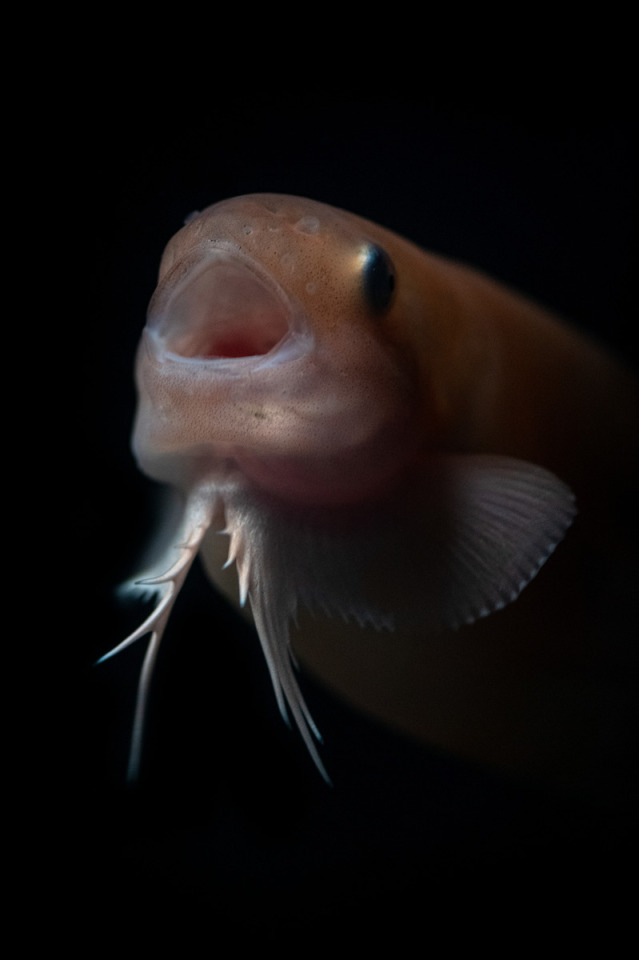
Our reaction when we found out that salmon snailfish can taste with their lil’ chin whiskers
Have a crabulous day with our ✨NEW✨ Spider Crab Cam!
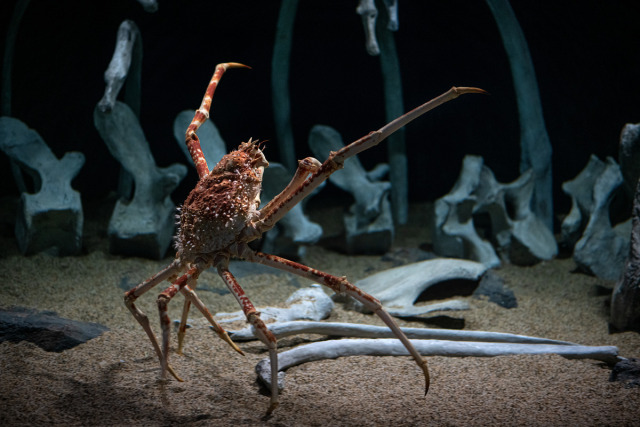
These gangly, glorious giants have ten legs that can span up to 12 feet (3.8 meters) from claw to claw. Eight are for walking, while the other two feature claws for feeding on decaying fish, invertebrates, and algae. You may notice these animals sit still for long stretches of time. This helps them survive in the deep sea where resources are scarce and energy must be conserved.
These crustacean sensations are not the only animals you’ll see on the cam! Our new exhibit features a whalefall community living around the model bones of a young sperm whale. When a whale’s life ends, its body often sinks to the seafloor where its nutrient-rich remains attract hungry scavengers and sustain an active ecosystem around it for decades. Take a close look and you’ll spot fish and other interesting invertebrates that call the deep seafloor home.
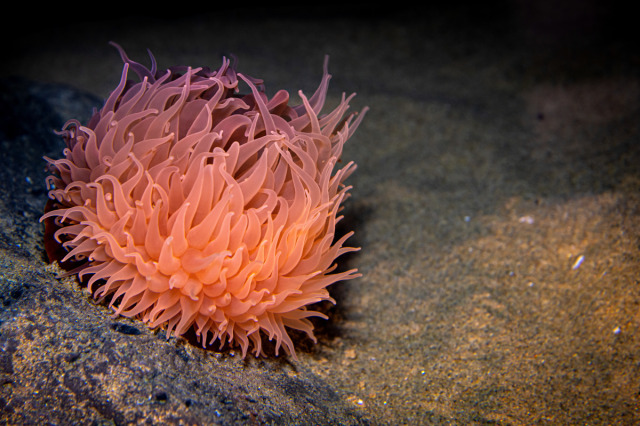
One, two, three, four, who’s that muppet on the seafloor? It’s a pom-pom anemone!
Though they may look like glow-in-the-dark chrysanthemums, pom-pom anemones are animals, not plants! Their tentacles are covered in venomous stinging cells called nematocysts, ready to catch a crustacean snack as it passes by in the dark.
Pom-pom anemones take on a variety of shapes—from low and flat to round and puffy. In fact, scientists have seen puffed up anemones rolling across the seafloor like living tumbleweeds, “blown” by deep sea currents. Scientists aren’t sure why pom-pom anemones change shape and roll around—they might be looking for “greener pastures,” where there’s more food to eat.
Sorry to bug you, but this giant isopod wants to meet you face to carapace!
The giant isopod (Bathynomus giganteus) is a colossal crustacean that grows up to 16 inches (40 cm) and is found in the deep Atlantic Ocean, living 1600 feet (500m) and more below the ocean’s surface.

Cousin to the backyard pillbug, Bathynomus is a connoisseur of carcasses. This adorable seafloor roomba senses its surroundings with large eyes and two sets of antennae to pick up the scent of some fresh carrion. The giant isopod roams the deep seafloor on 7 pairs of legs, with an occasional burst of speedy swimming from fluttering swimmerets, to feast on the remains of the deceased raining down from above.Because food fragments can be few and far between, they have adapted to eat as much as they can at one time, and then may not eat again for a year or more!

We’re sure that many of you are fans of giant isopods already—but if you’re not yet convinced, check this out! You can see AND TOUCH giant isopods for yourself in our new exhibition, ”Into the Deep: Exploring Our Undiscovered Ocean”! Tag someone who needs to give a giant isopod a pat on the back!

Hold on to your pneumatophore, because this siphonophore has never been shown to the world before!!
Siphonophores are some of those animals that are so deeply interwoven with the very fabric of oceanic food webs that they should be as common a reference for a predator as a shark, lion or bear.
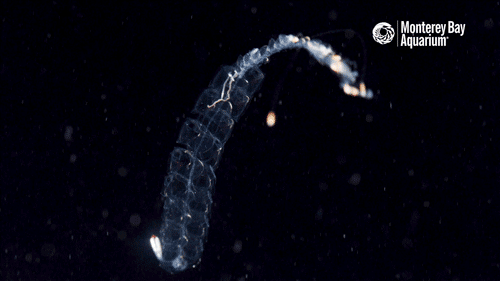
The most famous of all siphonophores is the floating menace known as the Portuguese Man O War (Physalia spp.)—but many more types of these colonial, stinging organisms exist throughout the global ocean and its water column! This siphonophore here is Nanomia bijuga, at times one of the most abundant gelatinous creatures in the water column of Monterey Bay.
Siphonophores are difficult to describe, because while they appear as “one animal,” they’re actually colonies of individual animal “zooids” with various roles—such as swimming, feeding and reproducing—that share the same gut and develop in repeating patterns as the colony propagates. Aquarist MacKenzie describes it as “a little spaceship with all the people on it all working for a common goal.”
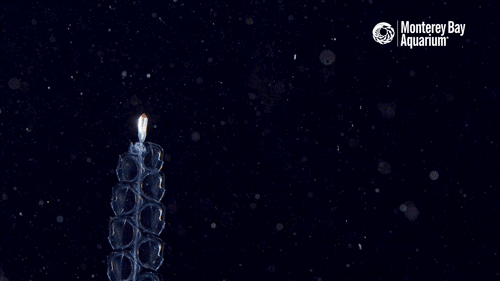
Siphonophores are part of the planktonic procession of predators and prey that migrate daily between productive surface waters and the shelter of the deep. Imagine that your daily commute involved dodging a stinging curtain of wispy, windborne tentacles!
As abundant and fearsome as they are, siphonophores are incredibly delicate and difficult to work with. Thanks to decades of experience working with gelatinous drifters and our ability to collect Nanomia from the deep Monterey Bay thanks to our colleagues @mbari-blog, our Jelly Aquarists are once again breaking ground. These are the first siphonophores *ever* on display in a public aquarium, and we are working behind the scenes to raise more siphonophores (siphonomores?) ourselves!
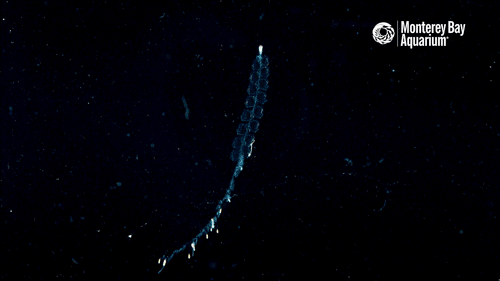
You can see these siphonophores now—”Into the Deep: Exploring Our Undiscovered Ocean” opened this weekend! Were you able to deep-sea it?!
Oh, you want some siphonomore? We gotchu. Warning! Ridiculously awesome scientific lingo incoming! This common siphonophore (Nanomia bijuga) is known as “physonect” siphonophore.
A gas-filled float known as a “pneumatophore” helps buoy the organism, while trailing swimming structures known as “nectophores” propel the colony along. Below the bells (known collectively as the “nectosome”) is the meat of the colony, the “siphosome.”
Now the language gets really fun! Gastrozooids deploy long tentacles like so many venomous fishing lines to reel in and assimilate prey, while defensive/digestive palpons stand guard between rows of male and female reproductive zooids known as “gonendra.” The pattern starts again at the next gastrozooid, completing the template of the repeating “cormidium” of zooids!
If you want to know even more about siphonophores, like whatever a “basigaster” is, check out this linkorthis one!
Japanese spider crabs put the “leg” in “legendary!” These crustacean sensations are the largest crabs in the world, with ten appendages that can span up to 12 feet (3.8 meters) from claw to claw. The gangly, glorious giants travel easily over mud on their long and limber legs to scavenge leftover scraps or dead animals that fall from above.

Our new exhibit, “Into the Deep: Exploring Our Undiscovered Ocean,” features a whale-fall community living around the model bones of a young sperm whale, including several male spider crabs—only the males grow such gargantuan limbs.

Things can get a little testy at times between the male crabs, especially around molting time—so we’ve come prepared! When one of our crabs shows signs of molting, we can move them to their own private penthouse off to the side of the exhibit so they can shed their old exoskeleton and grow a new carapace in peace!

You’ll find these captivating crabs and other astonishing animals in our new exhibit “Into The Deep: Exploring Our Undiscovered Ocean” exhibition—WHICH OH HEY BY THE WAY IS OPEN TODAY, APRIL 9, 2022! We can’t wait to deep-sea you!
AND ONE MORE THING! You can now see these beauties for yourself on our new live Spider Crab Cam!
